
|
Several resorts and cottage communities had been established on Cleveland's west side in the 19th century. These were primarily for wealthy families who could afford to buy or rent a cottage and take time away from their business. By the early 1900's such communities were appearing further west from the expanding cities and becoming more accessible to blue collar families, due in no small part to the Lake Shore Electric Railway. Automobiles were still rare, and unpaved rural roads were rough and dusty at the best of times, a nearly impassible quagmire at the worst. The fast, reliable interurbans provided comfortable and affordable transportation directly to the resorts along its right-of-way. As a result both the resorts and the railway flourished and prospered. Vermilion's Resorts As detailed on previous pages many picnic groves, bathing beaches and cottage resorts could be found along the Lake Shore's route in Rocky River, Bay Village, Avon, and Lorain. But Vermilion was justifiably called the gateway to Lake Erie's Vacationland. Traveling west from Lorain the landscape took on a relaxed rural atmosphere where forest and farmland met Lake Erie on sandy beaches and scenic bluffs that had not been put under the yoke of industry. With multiple swimming beaches, the amusements of Linwood Park and Crystal Beach, and various hotels and cottage communities throughout town, Vermilion could be considered a condensed version of vacationland in itself. Beulah Beach Like Linwood Park, some Vacationland communities began as religious retreats and summer meeting places. Beulah Beach, at stop 142, was founded by the Christian and Missionary Alliance. Previously the organization held its annual Bible and Missionary Conference, which drew considerable crowds from surrounding states, at Beulah Park in Euclid, Ohio. In 1920 the group purchased a 125-acre farm to use as a new venue for their conference. Cottages and year-round residences were built and a large barn on the property was converted to a tabernacle. In 1926 the Beulah Beach Bible Institute was opened to train ministers and missionaries. The large institute building (also known as the hotel or lodge) included dormatory rooms, classrooms, and a dining hall. Youth camps began in the 1930's and no doubt many young campers rode the interurbans from surrounding towns to Beulah Beach. Ninety years after its founding the tabernacle and institute building are both still in use, although the institute is now used for all manner of conferences and meetings rather than missionary training. Youth camps are still held every summer and the property has expanded to include sports facilities and an assisted living center. The footings for an LSE bridge can still be seen in Chappelle Creek, along the east side of Beulah Beach. Stop 143 was at the intersection of Lake Road and Joppa Road, just past Beulah Beach. A single-ended siding extended from stop 143 to stop 144 in front of the E.W. Kishman farm house. The farm house still stands and traces of the LSE roadbed can be seen along the south side of route 6. Heidelberg Beach The seed for Heidleberg Beach (stop 146) was planted in 1922 when ministers from Reformed Churches in Cleveland and Birmingham conceived of a resort for summer vacations and recreation. The private resort would be for church members only and provide a "Christian atmosphere...without the unpleasant odium of the dance-hall, rowdyism, or booze." In August 1924 twenty-two acres of lakeside farmland was purchased from Carl and George Friebolin. This "secluded and quiet territory" featured 700 feet of beach, an apple orchard, and a winding stream. Originally ninety-nine lots were platted, many of which were soon purchased by church members who camped in tents until their cottages were constructed. Construction and improvements continued steadily through the next several years. A concrete bridge was built over the stream at the property's entrance, roads graded and cindered, a well dug, breakwaters built to protect the beach, and a professional landscape architect contracted to plant trees and flowers for beautification. A large pavilion was built in 1928, a boat house in 1930, and by 1931 ten summer cottages had been erected. Brochures of the time extol the beauties and virtues of Heidelberg Beach and easy access "by electric car, or by auto over the exquisite Lake Shore Drive." Heidelberg Beach remains a private community today and many of the early structures, such as the pavilion and the bridge at the entrance, are still in use. German Reformed Church Stop 147 was at the German Reformed Church located at Frailey Road, sometimes called the Reformed Church at Mitiwanga. During the mid-19th century a large number of German immigrants came to the area and established the first German Reformed Church on Grand Street in downtown Vermilion in 1852. The Rev. Gerhard Kuhlen, born in Prussia in 1833, was one of them. Apparently Rev. Kuhlen wanted to make it easier for all families in the area to attend religious services near their homes, and established this second church west of town in 1874. The property was donated by the Knittle family, whose nearby farm would later become stop 148, and the present church building was erected in 1880. Services at the church were regularly conducted in German, which was still commonly spoken by locals of German descent well into the 20th century. In 1902 a new church parsonage was built at Mitiwanga, about a half mile west, and is a private residence today. Although the church was near Heidelberg Beach, established by members of the Reformed demonination in the 1920's, the two were not officially affiliated with each other. At the church's fiftieth anniversary in 1924 membership was 105, with another 50 unconfirmed members. However, membership declined sharply in the 1950's which led to the church's closure around 1960. Theives later stole the ornate leaded and stained glass windows from the disused building. Today it stands on private property, behind a fence, boarded up and shrouded by trees. Across the street traces of the LSE right-of-way are still barely discernable. Mitiwanga Reputedly a Native American word meaning "peaceful shore," Mitiwanga was one of the most popular resorts in the vacationland area. This land was originally part of the Almon Ruggles farm (see page two) but was sold after Almon Ruggles' death in 1840. It remained farm land for the next sixty years and was apparently split into two parcels in 1900, around the time the Sandusky & Interurban Railway came through the property. In 1901 the land north of Lake Road, about fifteen acres, was purchased by Charles Aves, an Episcopal minister from Norwalk. In 1902 Aves retired from the ministry and, possibly with the backing of affluent Norwalk businessmen, began developing the Mitiwanga resort. Construction of the electric railway may also have encouraged the decision to build a summer resort here, as it assured easy transportation from Norwalk, Sandusky, and even Cleveland to an otherwise remote rural location. The September 11, 1902 edition of the Huron-Erie County Reporter stated that the land was "a pretty place for the erection of summer cottages" and "laid out in drives and good size lots." Four breakwaters were built in 1908 to protect the beach and in 1912 about thirty cottages had been built. Most of these were owned by specific families and named accordingly, while others were available for rent by the week, month, or season and given light-hearted names such as Cozy Corner and Idylease. The Keewadin House, Hodgeson's Guest House, Venture Inn, and Mitiwanga Park Hotel were all various hotels which operated over the years, providing room and board for vacationers who did not own or rent a cottage. By 1912 approximately two-hundred vacationers were visiting Mitiwanga each summer where they enjoyed swimming, boating, fishing, tennis, golf, bowling, billiards, and dancing. Rev. Aves and his backers were not the only ones to have a hand in the growth of Mitiwanga. Lloyd Moats of Berlin Heights built three groups of cabins (eventually totalling seventy cabins) called Moats' Modern Camps. Camp #2, consisting of forty cabins, was located on the south side of Lake Road and the railway at Mitiwanga. Although simple and rustic in appearance the cabins featured the modern comforts of electricity, running water, flush toilets and telephones. The Ward brothers, of which there were several, owned many lots within Mitiwanga, a general store, and a farm house on the south side of the road. Deforest Ward owned property on the east side of the park where he opened the Wild Waves hotel and cottages. Lake Shore Electric stop 149 was at the Ward Brother's grocery store at the northwest corner of Lake Road and West Drive, the heart of Mitiwanga's "business district." Stores such as Ward's, Peter's Corners, and Suhr's provided groceries, refreshments, supplies, gasoline, newspapers and daily mail service to vacationers, travelers, and local residents. A minor accident occurred on the LSE at Mitiwanga just after noon on October 17, 1912 when an eastbound limited collided with a westbound local car. The local was just entering the passing siding between Mitiwanga and Ruggles Beach when the limited came down the track at speed and struck in a glancing blow. The vestibules of both cars were destroyed and ten or more people received minor injuries such as bruises and cuts from flying glass. Temporary repairs were made to the cars on the scene before they were moved to the LSE shops at Sandusky. Mitiwanga continued to grow and prosper through the 1920's and 30's. More cottages, ammenities and attractions were added and by some accounts as many as 800 people were visiting the park each summer by 1930. The heyday of the vacationland resorts faded after World War II as new prosperity and long distance transportation made faraway vacations more accesible. The housing shortage after the war also encouraged the conversion of many cottages to year-round homes. The Ward Brother's store underwent many changes over the years and served as a restaurant, meat market and post office operated by Jay Ward until 1959. Suhr's general store remained in business until October 1966 when a speeding semi-truck jack-knifed and slid into the fifty year old building, demolishing it. Today Mitiwanga is less rural and rustic but still exists as a quiet beach community with year-round homes, summer cottages, a mobile home park, and small businesses. |
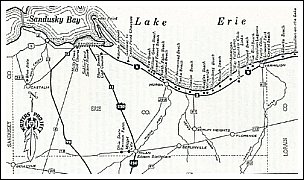
Works Progress Administration in 1940. (Dan Brady) |

rural roads of the 1900's, like this one near Sandusky. (Hayes Presidential Center) |
|
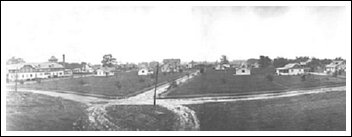
probably around 1930. (Vermilion Views) |
|

|
|
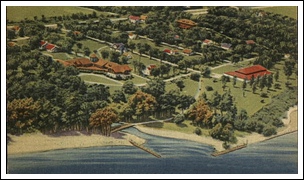
(Drew Penfield) |
|

alongside U.S. 6 near Beulah Beach. (Dennis Lamont photo) | |

166 passes at Joppa Road in 1936. (Dennis Lamont) |
|

E.W. Kishman farm house, stop 144. (Howard Ameling) |
|
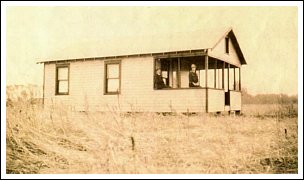
Rev. Harry Rohrbaugh in 1926. (Rohrbaugh family) |
|
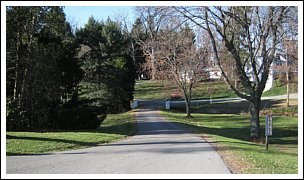
(Dan Brady photo) |
|
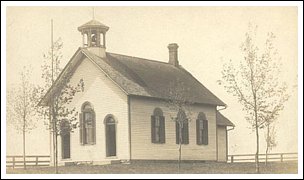
1880's, shortly after it was built. (Vermilion Views) |
|

at Mitiwanga and is a residence today. (Ernst Neibergall photo) |
|

fence on private property. (Drew Penfield photo) |

Frailey Road. (Drew Penfield photo) |
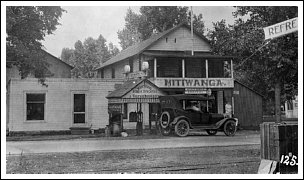
in 1912. LSE tracks at bottom of photo. (Ernst Niebergall photo) |
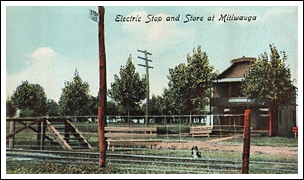
(Paige Sanders) |
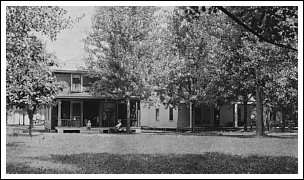
the background. (Ernst Niebergall photo) |
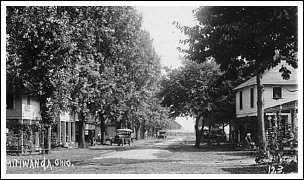
(Ernst Niebergall photo) |
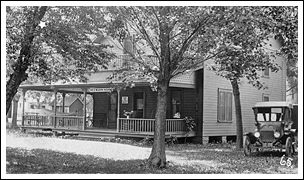
visitors who did not rent a cottage. (Ernst Niebergall photo) |
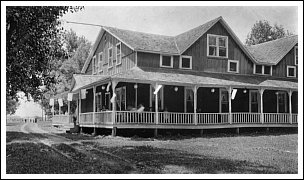
of the Mitiwanga hotel. (Ernst Niebergall photo) |
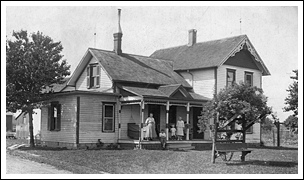
Road, now the site of a large nursery. (Ernst Neibergall photo) |

side of Mitiwanga. (Paige Sanders) |
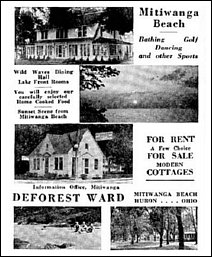
and cottages on east side of Mitiwanga. (Dennis Lamont) |

as a residence in 2010. (Dan Brady photo) |

siding is visible at right. (Ernst Niebergall photo) |

accident at Mitiwanga in 1912. (Dennis Lamont) |
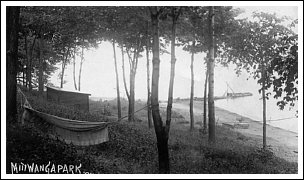
|
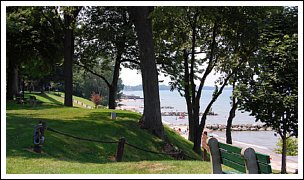
(Brendi Price photo) |
|
|
|